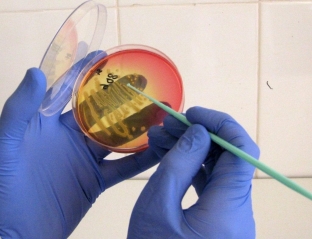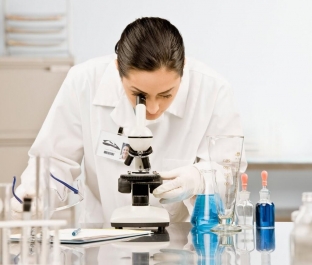Chlamydia is one of the most common sexually transmitted diseases. The incubation period, which lasts from the moment of infection to the onset of initial symptoms, averages from two weeks to one month. The cause of this pathological condition is chlamydia (Chlamydia trachomatis), which primarily affects the human genitourinary system. It should be noted that chlamydia & nbsp; can develop in both men and women. At the same time, it must be said that both the first and the second can be carriers of this bacterium and spread it during household contacts or sexually. Both men and women use the same methods for diagnosing chlamydia.
What are the main methods for diagnosing chlamydia
Symptoms of chlamydia in women and men do not appear during the incubation period, but, most often, unprotected sexual intercourse with a casual sexual partner leads to infection. The purpose of diagnostic studies is to identify the causative agent of an infectious disease that is sexually transmitted, including for the diagnosis of chlamydia.
Thus, after unprotected sexual intercourse, which is associated with a risk of getting chlamydia, a person should seek advice from a urologist, gynecologist or venereologist.
As a rule, to identify the causative agent of the infectious process, the doctor prescribes a list of the following studies:
- Microscopic analysis or, as it is often called in daily practice, a general swab for infection. Despite the fact that the study of mucus and other secretions from the urethra for the presence of chlamydia has long been recognized as insufficiently effective, due to the low cost of the study, it continues to be widely used. For a patient, this procedure for diagnosing chlamydia is practically painless, since he has to submit only a swab from urethra for analysis. According to recent studies, the effectiveness of such a diagnosis is no more than 15%.
- Chlamydia culture. For the patient, the analysis sampling technique is no different from the previous one. With regard to medical features, after a smear, the alleged culture of bacteria is not examined under a microscope, but is sown on a special nutrient medium. There, in case of a positive result, a pure culture of infection grows. The information content of the method reaches 80%, but the time for obtaining the result takes several days.

- One of the modern methods for diagnosing chlamydia, which allows you to quickly, and most importantly, reliably determine the presence of a pathogenic culture in the human body, is enzyme immunoassay (ELISA), notes estet-portal.com. For this diagnostic study, the material is taken not from the genital tract, but from blood. It reveals specific proteins that appear in response to the presence of chlamydia in the body.
The only nuance that stops many doctors from routinely using ELISA is that the accuracy of the procedure does not exceed 60%, and the possibility of detecting an infection appears no earlier than the 10th day after infection.
- To date, the only diagnostic procedure that allows you to detect chlamydia almost the next day after infection with one hundred percent accuracy is considered to be polymerase chain reaction (PCR). The essence of the technique is to determine the DNA of a microbial cell in human blood. False-positive results are possible only in case of improper sampling, preparation or transportation of the test material. Despite the high efficiency of this method for diagnosing chlamydia, it has not yet become widespread due to the rather high cost of the procedure.

Chlamydia drug groups
In addition to all of the above, recently, express methods for the rapid diagnosis of chlamydia, which can be performed even at home, have gained popularity.
Firstly, the accuracy of the express method does not exceed 20%. Secondly, if the result is positive, each of the doctors will double-check the results of the rapid test using the traditional studies described above.
If at least one of the above diagnostic procedures is positive, the patient needs an immediate course of treatment, which consists of the following items:
- Antibacterial therapy. Recently, such groups of antibiotics as macrolides (erythromycin, azithromycin, clarithromycin) have been used to treat chlamydia.
- Antifungal drugs, the purpose of which, in the first place, is not to eliminate the microbial focus, but to prevent fungal complications that may occur during antibiotic therapy.
- Immunomodulatory agents such as interferon.
- Topical antimicrobials.
During chlamydia infection, not only patients themselves, but also their sexual partners are subject to mandatory diagnosis of chlamydia and treatment. In addition, diet therapy with restriction of dairy products and alcohol is an obligatory component of treatment.







Add a comment